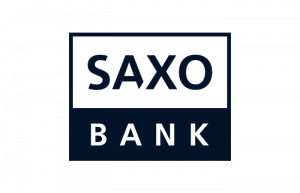S&P 500 Forecast: Anticipating Market Movements
Navigating the financial landscape, the S&P 500 forecast emerges as a beacon for investors, offering insights into potential market trends and investment opportunities. This article delves into the factors shaping the future of the S&P 500, providing guidance for strategic investment decisions.

The Standard & Poor’s 500, or S&P 500, is a market-capitalization-weighted index of 500 of the largest publicly traded companies in the U.S. It is widely regarded as one of the best single gauges of large-cap U.S. equities. An array of investors closely watches the S&P 500 forecast to gauge the health of the stock market and, by extension, the U.S. economy. Understanding the forecast can help investors make informed decisions, whether they’re looking to adjust their investment portfolios, identify entry and exit points, or simply gauge market sentiment.
Several key factors influence the S&P 500 forecast, including economic indicators, corporate earnings reports, interest rates, inflation, and geopolitical events. Economic indicators such as GDP growth rates, unemployment figures, and consumer spending can provide insights into the overall health of the economy, which in turn affects stock market performance. Corporate earnings reports give a snapshot of companies’ financial health and profitability, influencing their stock prices and the overall direction of the market.
Interest rates are another critical factor. The Federal Reserve’s monetary policy, especially regarding interest rates, can significantly impact the stock market. Lower interest rates tend to make borrowing cheaper, potentially stimulating investment and spending, which can drive market gains. Conversely, higher interest rates can slow down economic activity, potentially leading to market downturns.
Inflation also plays a crucial role in shaping the S&P 500 forecast. Moderate inflation is often a sign of a growing economy, but high inflation can erode purchasing power and squeeze corporate margins, negatively affecting stock prices. Investors monitor inflation indicators to predict the Fed’s actions on interest rates, which can impact market performance.
Geopolitical events and uncertainties, including elections, trade wars, and conflicts, can cause volatility in the markets. Investors need to stay informed about such events as they can have immediate and profound effects on market sentiment and performance.
Looking ahead, technology and innovation continue to be significant drivers of growth in the S&P 500. Companies in the technology sector, including giants like Apple, Microsoft, and Alphabet (Google’s parent company), have a substantial impact on the index due to their market capitalizations. Trends such as digital transformation, cloud computing, and artificial intelligence are expected to continue fueling growth in this sector.
However, predicting the market’s direction involves uncertainty. While historical data and trends can provide insights, unexpected events can quickly shift the market’s course. Therefore, investors often diversify their portfolios to mitigate risks and rely on a mix of fundamental and technical analysis to guide their decisions.
In conclusion, the S&P 500 forecast is a vital tool for investors looking to navigate the complexities of the stock market. By staying informed about economic indicators, corporate earnings, interest rates, inflation, and geopolitical events, investors can better anticipate market movements. While the future remains uncertain, a strategic approach to investing, grounded in a thorough understanding of the factors influencing the S&P 500, can help investors achieve their financial goals.









